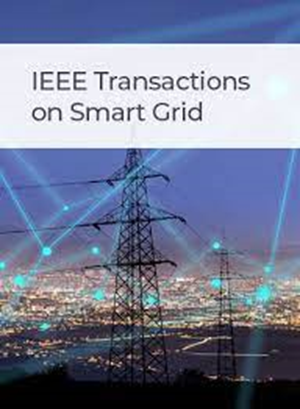Single-Pole-to-Earth Fault Section Detection of the MVDC Cables Based on Variation Mechanism of Grounding Line Currents
IF 8.6
1区 工程技术
Q1 ENGINEERING, ELECTRICAL & ELECTRONIC
引用次数: 0
Abstract
The multiple-conductor structure of the medium-voltage direct current (MVDC) cable results in complex electromagnetic couplings, posing great challenges to analyze variation laws of grounding line currents which can be used to detect the single-pole-to-earth faults (SPTEFs). In this paper, the equivalent circuit models of the MVDC cable in both normal and fault conditions are constructed by considering electromagnetic couplings between multiple conductors of both poles. The variation mechanism of the grounding line current before and after a SPTEF is explained by theoretical analysis. Considering communication methods in practice, two fault section detection criteria are proposed based on variation features of grounding line currents. The experiment model of a MVDC cable system is established by RTDS real time simulators. The method is only validated by hardware in the loop simulation. The simulation results show that the method is applicable to both ordinary faults and high-impedance ones with基于接地电流变化机理的MVDC电缆单极对地故障段检测
中压直流(MVDC)电缆的多导体结构导致了复杂的电磁耦合,为分析接地线电流的变化规律以检测单极对地故障(SPTEFs)提出了很大的挑战。本文考虑了MVDC电缆两端多导体之间的电磁耦合,建立了正常和故障情况下MVDC电缆的等效电路模型。通过理论分析,解释了SPTEF前后接地电流的变化机理。结合实际通信方法,提出了两种基于接地电流变化特征的故障路段检测准则。利用RTDS实时仿真器建立了MVDC电缆系统的实验模型。该方法仅通过硬件在环仿真验证。仿真结果表明,该方法既适用于普通故障,也适用于高阻抗故障。在噪声为20dB时,故障检测精度可达99%,在测量误差为±10%时,故障检测精度不低于95%。该方法的最短实现时间仅为0.1ms。对比工作表明了该方法的优越性。
本文章由计算机程序翻译,如有差异,请以英文原文为准。
求助全文
约1分钟内获得全文
求助全文
来源期刊

IEEE Transactions on Smart Grid
ENGINEERING, ELECTRICAL & ELECTRONIC-
CiteScore
22.10
自引率
9.40%
发文量
526
审稿时长
6 months
期刊介绍:
The IEEE Transactions on Smart Grid is a multidisciplinary journal that focuses on research and development in the field of smart grid technology. It covers various aspects of the smart grid, including energy networks, prosumers (consumers who also produce energy), electric transportation, distributed energy resources, and communications. The journal also addresses the integration of microgrids and active distribution networks with transmission systems. It publishes original research on smart grid theories and principles, including technologies and systems for demand response, Advance Metering Infrastructure, cyber-physical systems, multi-energy systems, transactive energy, data analytics, and electric vehicle integration. Additionally, the journal considers surveys of existing work on the smart grid that propose new perspectives on the history and future of intelligent and active grids.
 求助内容:
求助内容: 应助结果提醒方式:
应助结果提醒方式:


